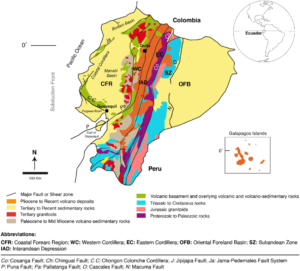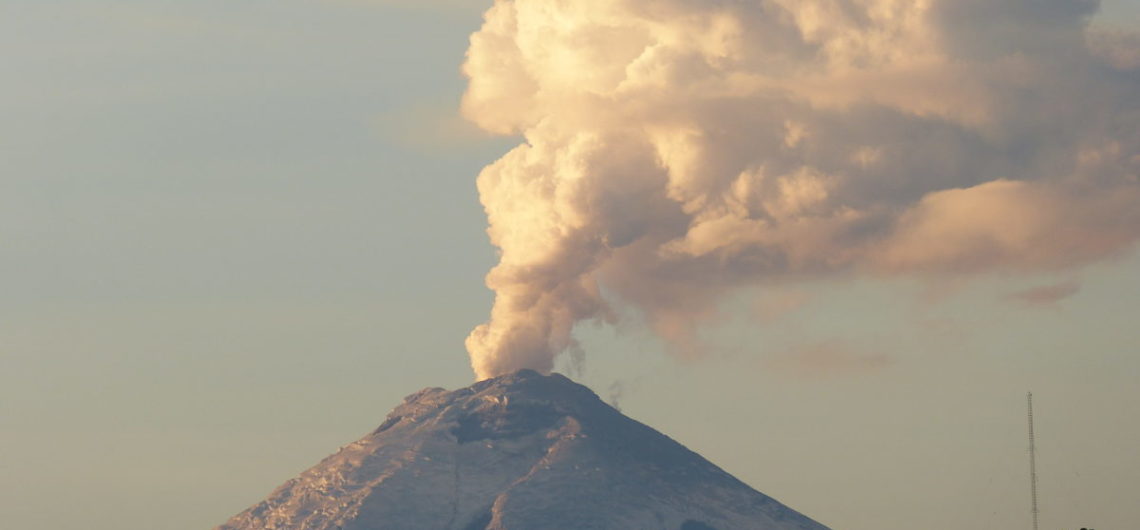Nestled along the equator in South America, Ecuador is a land of remarkable geological diversity and intrigue. Its geological history is a tale of tectonic forces, volcanic eruptions, mountain-building events, and the shaping of unique landscapes. Let’s embark on a journey through the geological wonders of Ecuador.
Tectonic Marvels
At the heart of Ecuador’s geological story is the convergence of the Nazca Plate and the South American Plate. The Nazca Plate is subducting beneath the South American Plate along the Peru-Chile Trench, giving rise to a series of remarkable geological features.

1. The Andes Mountains
Ecuador’s spine is formed by the Andes Mountains, a towering chain of peaks that stretches from north to south. This majestic range is a direct result of the ongoing subduction of the Nazca Plate beneath the South American Plate. The collision of these two plates has led to the uplift of the Andes, creating some of the world’s highest volcanoes and peaks, such as Chimborazo and Cotopaxi.
2. The Ring of Fire
Ecuador is part of the Pacific Ring of Fire, a horseshoe-shaped region known for its frequent volcanic activity and earthquakes. The country is dotted with numerous active volcanoes, including Tungurahua, Sangay, and Cotopaxi. These volcanoes are both a geological hazard and a source of fertile soils that sustain agriculture in the highlands.
Volcanic Beauty
Ecuador’s volcanoes are not just geologically significant; they also contribute to its breathtaking natural scenery. Cotopaxi, for instance, is one of the world’s highest active volcanoes and stands as an iconic symbol of the country.
3. The Galapagos Islands
Off the coast of Ecuador lies the Galapagos Islands, renowned for their extraordinary biodiversity and geological uniqueness. These islands are volcanic in origin, formed by the movement of the Nazca Plate over a hot spot in the Earth’s mantle. The result is a stunning archipelago with a wide range of geological features, from rugged lava fields to lush, green highlands.
4. The Amazon Rainforest
Ecuador’s eastern lowlands are dominated by the vast Amazon rainforest. The sedimentary rocks of the Amazon basin reveal a different geological history. This region is characterized by river systems, floodplains, and rich mineral deposits, making it one of the world’s most biologically diverse areas.
5. The Coastal Plain
To the west, Ecuador is bordered by the Pacific Ocean, and its coastal region is a mix of low-lying plains and rugged terrain. Sedimentary rocks, uplifted by tectonic activity, have shaped the coastline and created fertile agricultural areas.
Geological Wonders Await
Ecuador’s geological diversity not only shapes its landscapes but also influences its climate, ecosystems, and cultural heritage. Visitors to Ecuador can explore these geological wonders firsthand, from trekking in the Andes to witnessing volcanic eruptions and exploring the unique geological formations of the Galapagos Islands.
Conservation and Challenges
While Ecuador’s geological richness is a source of wonder, it also presents challenges. Volcanic eruptions and earthquakes can pose risks to communities, and responsible land use and disaster preparedness are crucial. Additionally, the exploitation of mineral resources in the Amazon basin raises environmental and sustainability concerns, highlighting the importance of balanced conservation efforts.
In conclusion, Ecuador’s geological tapestry is a testament to the Earth’s dynamic forces and the remarkable landscapes they create. It’s a land where volcanoes meet the rainforest, where tectonic plates collide, and where geology plays a pivotal role in shaping the country’s natural and cultural heritage. Whether you’re an aspiring geologist or a nature enthusiast, Ecuador’s geological wonders offer an extraordinary journey through time and terrain.



Comments